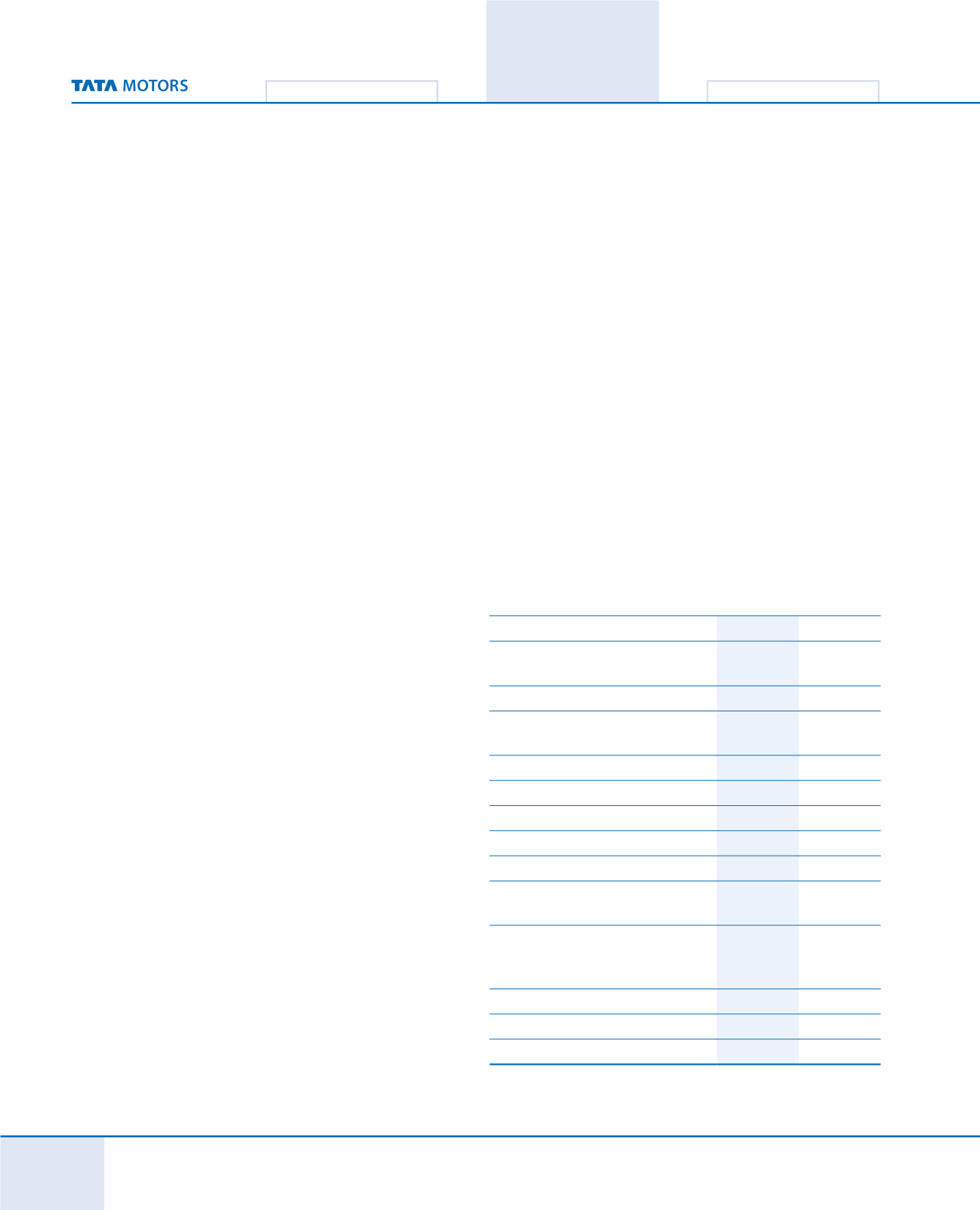
Statutory Reports
Corporate Overview
69th Annual Report 2013-14
84
Financial Statements
Some of the Company’s financing agreements and debt
arrangements set limits on and / or require prior lender consents
for, among other things, undertaking new projects, issuing new
securities, changes in management, mergers, sale of undertakings
and investment in subsidiaries. In addition, certain financial
covenants may limit the Company’s ability to borrow additional
funds or to incur additional liens. Certain of the Company financing
arrangements also include various covenants to maintain certain
debt-to-equity ratios, debt-to-earnings ratios, liquidity ratios,
capital expenditure ratios and debt coverage ratios all of which,
except one, have been met by the Company. The breach of the
single covenant has also been waived by the lenders and has not
resulted in any 'Default' or penalties.
The cash and liquidity is located at various locations in its
subsidiaries along with balances in India. Jaguar Land Rover’s
subsidiary in China is subject to foreign exchange controls and
thereby has some restrictions on transferring cash to other
companies of the group outside of China.
There may also be legal or economic restrictions on the ability
of subsidiaries to transfer funds to the Company in the form of
cash dividends, loans, or advances, however such restrictions have
not had and are not estimated to have significant impact on the
ability of the Company to meet its cash obligations.
FINANCIAL PERFORMANCE ON
A STANDALONE BASIS
The financial information discussed in this section is derived from
the Company’s Audited Standalone Financial Statements.
As explained in the business section, the domestic economic
environment deteriorated further, in the current fiscal. As a result,
the automotive industry shrunk significantly.
Revenues (net of excise duty) were
`
34,288.11 crores in FY2013-
14, as compared to
`
44,765.72 crores, representing a decrease
of 23.4%. As explained above, the total number of vehicles sold
during the year decreased by 30.2%. The domestic volumes
decreased significantly by 32.1% to 519,755 vehicles from 765,557
vehicles in FY 2013-14 and export volumes decreased marginally
by 2% to 49,922 vehicles from 50,938 vehicles in FY 2013-14. The
sale of spare parts / aggregates has also decreased by 8.2% to
`
3,006.31 crores from
`
3,273.80 crores in FY 2012-13.
Significant volumes reduction, adverse product mix, more
particularly in the commercial vehicles, and intense competition
amongst all product segments, impacted the operating margin,
recording a negative margin of 1.4% of sales (positive 4.8% for
FY 2012-13). As a result the Loss before tax was
`
1,025.80 crores,
as compared to Profit before tax of
`
174.93 crores in FY 2012-13.
There was a tax credit of
`
1,360.32 crores in FY 2013-14 due to
significant loss from operations. The Profit after tax was
`
334.52
crores as compared to
`
301.81 crores in FY 2012-13.
The analysis of performance is given below:-
Percentage to revenue from operations
FY 2013-14
FY 2012-13
Revenue from operations net of excise
duty
100
100
Expenditure:
Cost of material consumed (including
change in stock)
75.6
73.6
Employee Cost
8.4
6.3
Manufacturing and other expenses (net)
20.3
17.4
Amount Capitalised
(2.9)
(2.1)
Total Expenditure
101.4
95.2
Other Income
11.2
4.7
Profit
before
Exceptional
Item,
Depreciation, Interest and Tax
9.8
9.5
Depreciation and Amortisation (including
product
development/
engineering
expenses written off)
7.3
5.0
Finance costs
3.9
3.1
Exceptional Item – Loss
1.6
1.0
Profit / (Loss) before Tax
(3.0)
0.4


